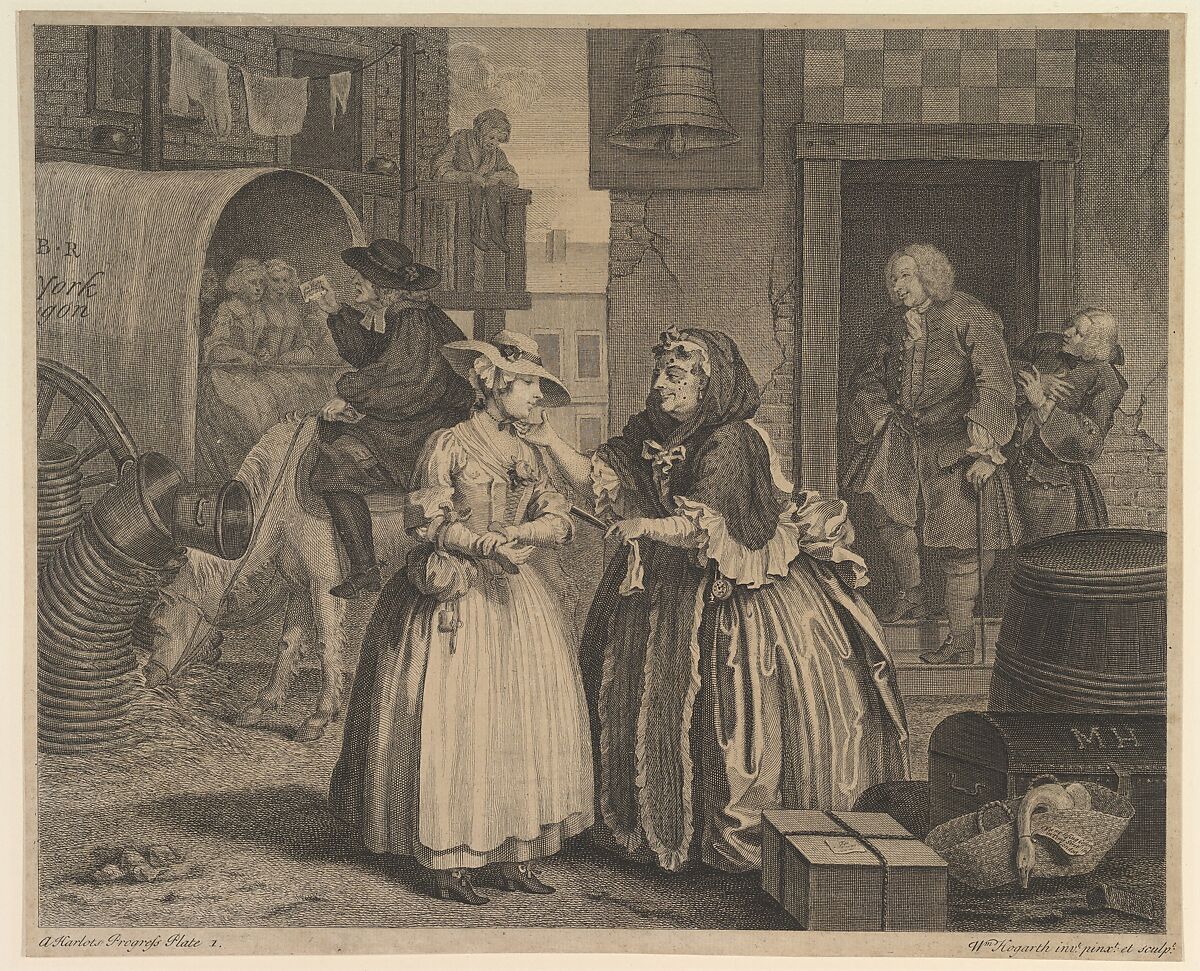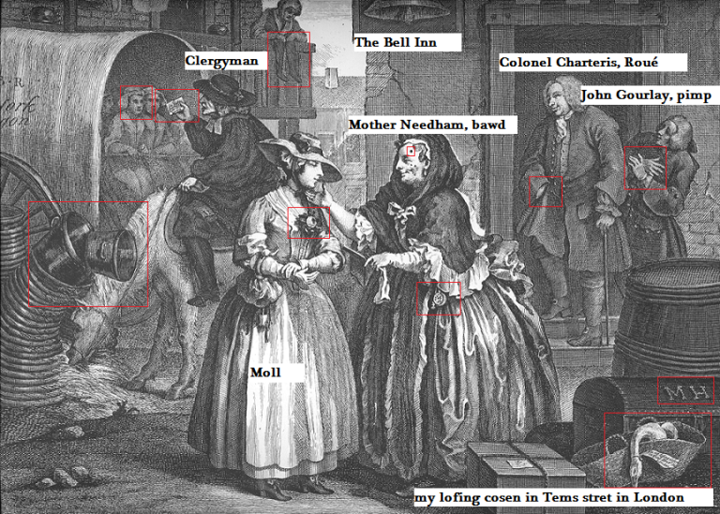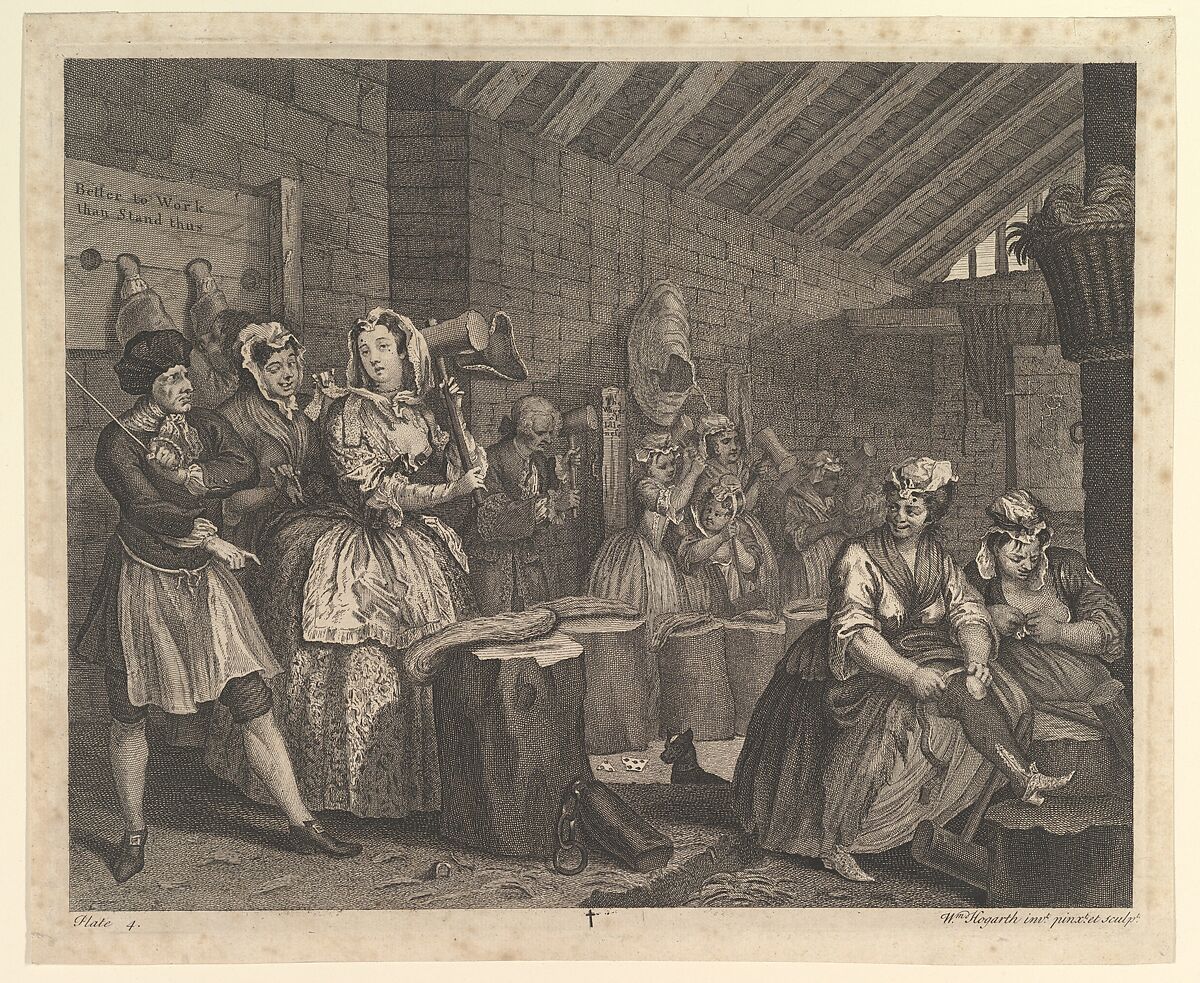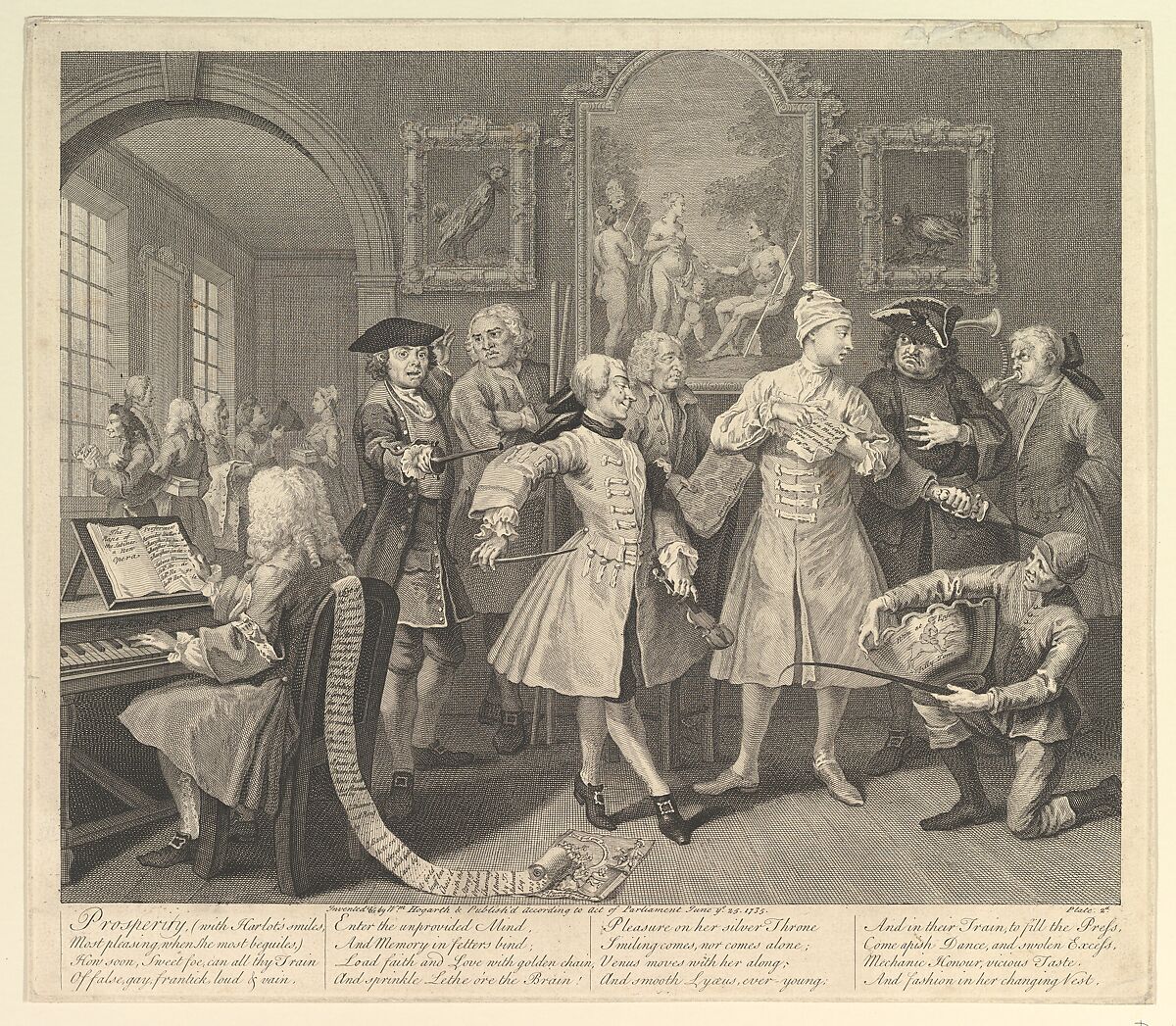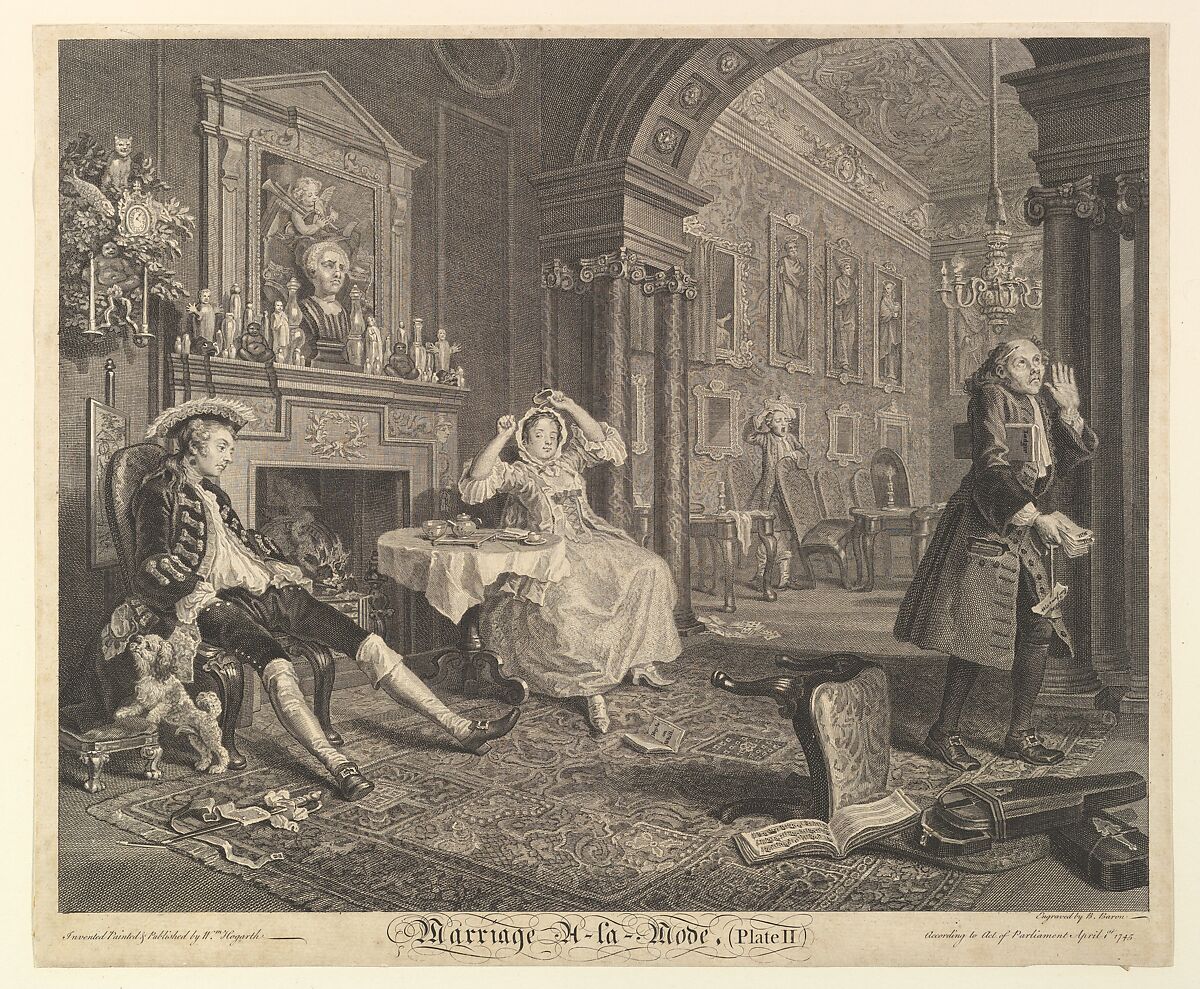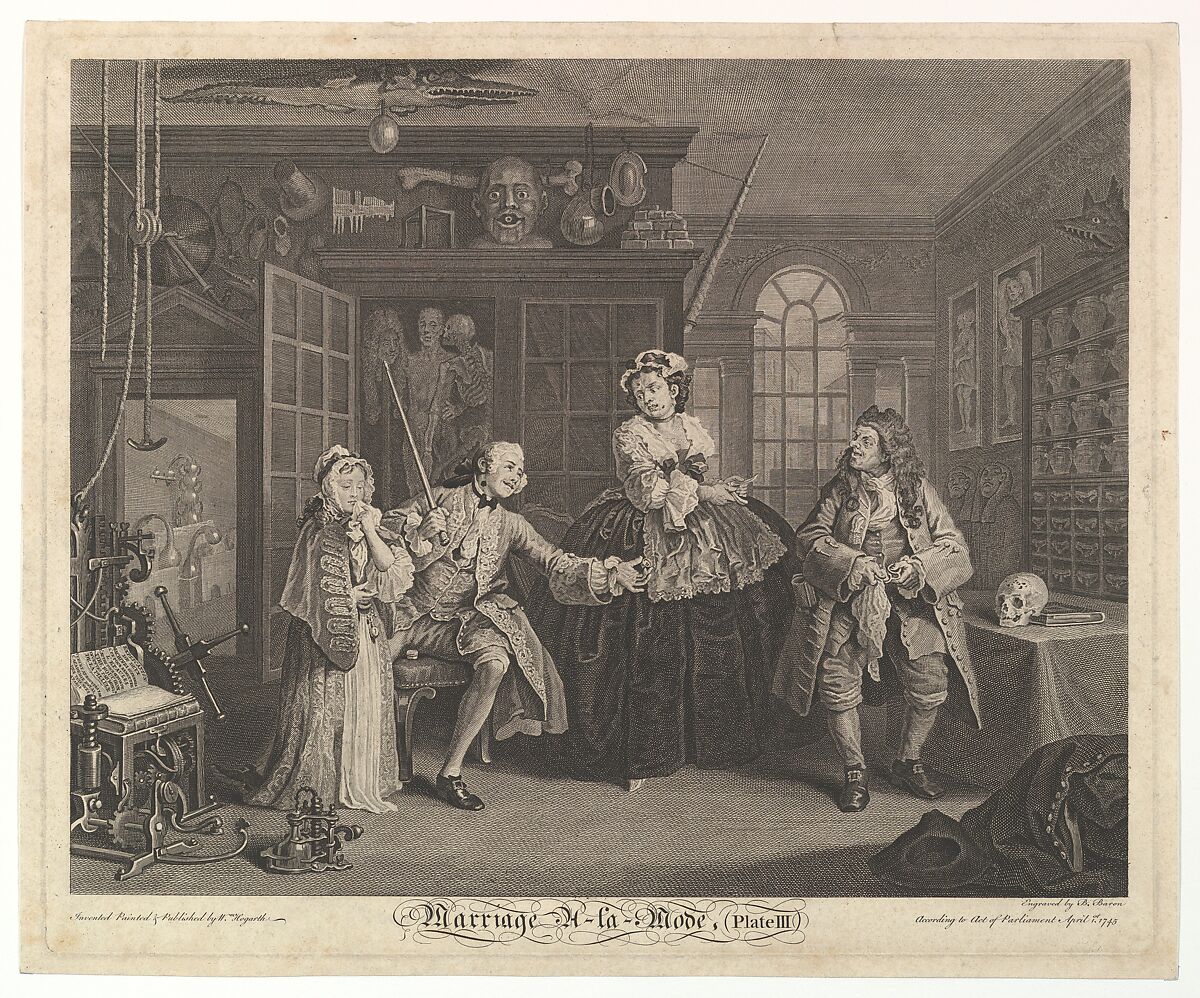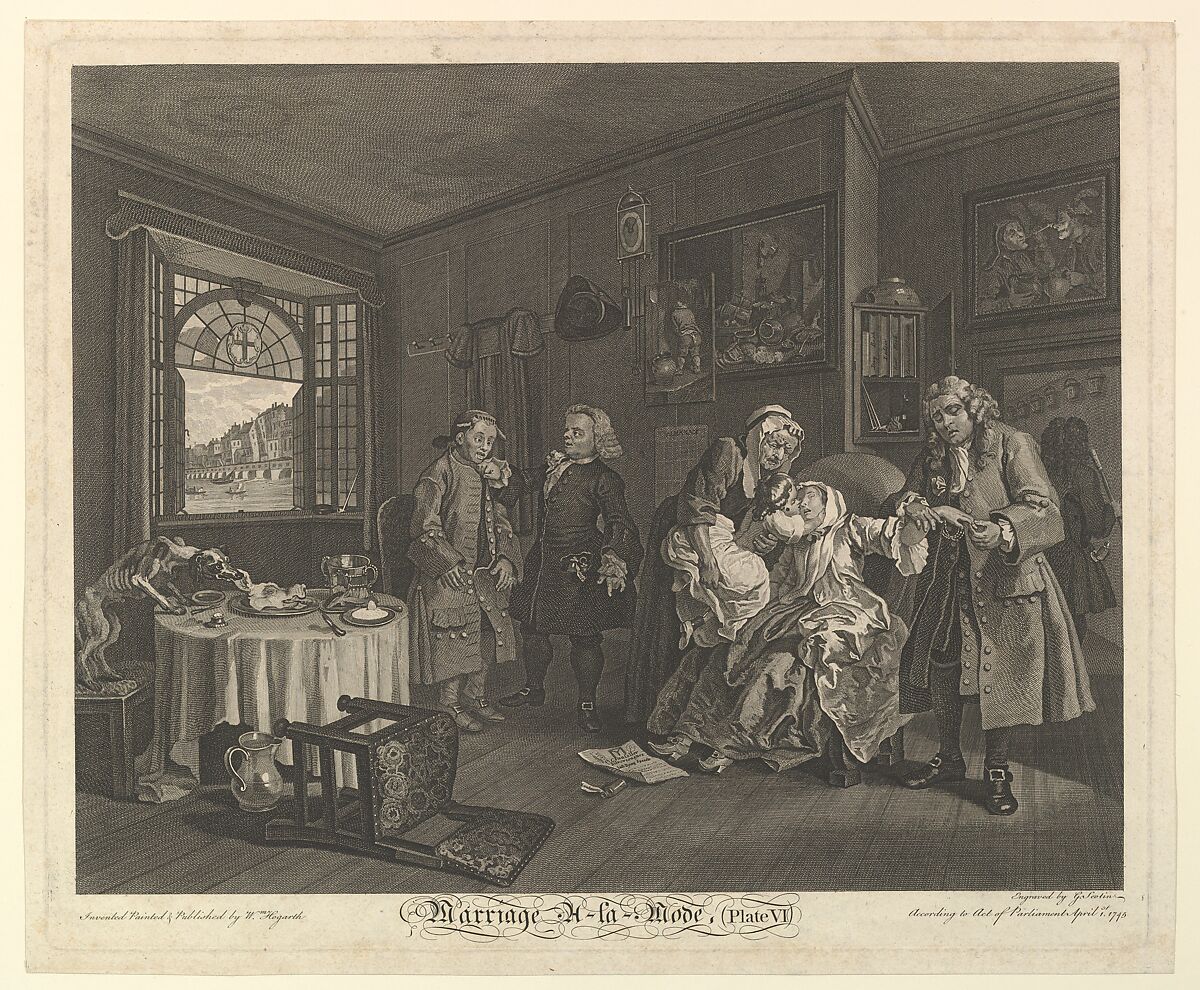s2e33 History of Prints William Hogarth (part one)
Platemark: Prints and the Printmaking Ecosystem
Release Date: 11/12/2024
 s3e85 printing vintage semiconductors with artist Deb Puretz
s3e85 printing vintage semiconductors with artist Deb Puretz
Platemark: Prints and the Printmaking Ecosystem
In this episode of Platemark, Deb Puretz, an IT professional and artist, discusses her journey into the art world and navigating it as an outlier. Deb, originally from California and now based in South Carolina, shares her experiences of making connections, leveraging business skills, and adapting to new technologies in art. She talks about her early career in Hong Kong, the pivotal moments in her art practice, and working with semiconductors to create unique prints. Deb emphasizes the importance of connections, perseverance, and aiding fellow artists. She also touches on the evolving...
info_outline s3e84 printing in plaster with artist Jonathan Beaumont Thomas
s3e84 printing in plaster with artist Jonathan Beaumont Thomas
Platemark: Prints and the Printmaking Ecosystem
In this episode of Platemark, Ann talks with artist and teacher Jonathan Thomas who shares insights from his time at the Maryland Institute College of Art (MICA), the printmaking program he chairs, and his personal studio in Baltimore. We take a deep dive into his exploration of printing in plaster, detailing the technical process, historical context, and the challenges it presents compared to traditional intaglio printmaking. We talk about his shift from multi-plate color works to black and white, emphasizing the joy and struggle of achieving precise visual results. We talk about his...
info_outline s3e83 solarplate etching with Dan Welden
s3e83 solarplate etching with Dan Welden
Platemark: Prints and the Printmaking Ecosystem
In this episode of Platemark, Ann sits down with the legendary artist and printmaker Dan Welden. The artist is known for his pioneering work in solarplate etching, a revolutionary, chemical-free printmaking process. Welden recounts his experiences and collaborations with significant artists like Eric Fischl and Elaine and Willem de Kooning. He also delves into his personal creative struggles, preferences for classical music, and tales of his distinctive handmade house filled with artist tiles and unique craftsmanship. The episode is a compelling insight into Welden's artistic journey...
info_outline s3e82 topology- and philosophy-imbued domestic scenes with Ellen Heck
s3e82 topology- and philosophy-imbued domestic scenes with Ellen Heck
Platemark: Prints and the Printmaking Ecosystem
In this episode of Platemark, I talk with Ellen Heck about her artistic journey and work. We talk about the intricacies of printmaking techniques, Ellen's various portrait series, and the conceptual ideas behind her work. Ellen shares her journey from studying philosophy at Brown, to printmaking at the School of the Art Institute of Chicago, and finally working at the Kala Art Institute in Berkeley. They also explore topics like the influence of Mary Cassatt, the use of color wheels in organizing compositions, and Ellen's fascination with topology in her artwork. Our insightful conversation...
info_outline s3e81 building and fixing presses with Mike Stark
s3e81 building and fixing presses with Mike Stark
Platemark: Prints and the Printmaking Ecosystem
In this episode of the Platemark, I interview Mike Stark, the co-founder and owner of Stark Press Company. The New Jersey-based company, run by Mike and his brother Tom, builds new presses, services old presses, and aids in moving them. They often collaborate with Perry Tymeson, a legendary press repairman. Mike shares insights into designing new presses, managing a small business, and balancing creative work. We talk about studying print media at SAIC in Chicago and establishing Stark Press. We talk about his experiences in moving heavy presses, sometimes in challenging conditions, and the...
info_outline s3e80 melding printing and publishing with curatorial work with Mae Shore
s3e80 melding printing and publishing with curatorial work with Mae Shore
Platemark: Prints and the Printmaking Ecosystem
In this episode of Platemark, I talk with Mae Shore, a collaborative printer and owner of Shore Publishing in Tuxedo Park, New York. Mae shares her experiences working at Pace Editions with notable artists like Jim Dine and Chuck Close. She discusses the history and evolution of her gallery and print shop, which she established to merge her love for printmaking and curating exhibitions. Mae touches upon specific projects, such as her collaborations with artists like Amy Bennett, Kamrooz Aram, and Katia Santibañez and James Siena, detailing the unique processes and challenges in creating...
info_outline s3e79 contemporary Japanese prints with Michael Verne
s3e79 contemporary Japanese prints with Michael Verne
Platemark: Prints and the Printmaking Ecosystem
In this episode of Platemark, I talk with Michael Verne, the owner of the Verne Collection in Cleveland, Ohio. Mike's gallery specializes in contemporary Japanese art and works by American artists residing in Japan. We talk about the challenges and rewards of running a small gallery amid larger competitors, and the importance of finding and promoting new artists. Mike shares insights about his journey in the art world, from his childhood surrounded by art to becoming a successful gallerist without a formal art education. He recounts various personal anecdotes, including his experiences at art...
info_outline s3e78 electronic arts in printmaking with Myles Calvert
s3e78 electronic arts in printmaking with Myles Calvert
Platemark: Prints and the Printmaking Ecosystem
In this episode of Platemark, Myles Calvert, a printmaker and professor, shares his extensive journey from growing up in Ontario, Canada, to studying and working in the UK, and eventually returning to Alfred University in New York, to become director of the Institute of Electronic Arts. Myles discusses his experiences working at prestigious galleries in London, giving up a tenure-track position, and the pivotal moments that shaped his career. He delves into his role as the Director of IEA at Alfred, including the intricacies of managing residencies, the use of technology in printmaking, and...
info_outline s3e77 documenting the printmaking ecosystem with Susan Goldman
s3e77 documenting the printmaking ecosystem with Susan Goldman
Platemark: Prints and the Printmaking Ecosystem
In this interview with the director and founder of Lily Press and the Printmaking Legacy Project, Susan Goldman shares her passion for printmaking and documentary film making. Susan discusses her journey from discovering printmaking at Indiana University, Bloomington, to founding Lily Press and creating impactful documentaries like Midwest Matrix. She highlights her educational experiences, mentors, and the vibrant printmaking community she's built over time. Goldman also delves into her personal work, her love for screenprinting, and the balance of managing a studio while collaborating with...
info_outline s3e76 the print studio as sanctuary with Bryan Raymundo
s3e76 the print studio as sanctuary with Bryan Raymundo
Platemark: Prints and the Printmaking Ecosystem
In this episode, Ann talks with Bryan Raymundo, owner of the Black Fragment Press. They discuss their meeting at the Mid America Print Council conference and Bryan’s background, from growing up in Mexico and Kansas to his love for Black Sabbath and printmaking. Bryan reveals his journey into art, inspired by comforting his sick grandmother with drawings, and his challenges in balancing his family’s immigrant expectations with his artistic aspirations. They delve deeply into his evolving art practice, the importance of mentors like Marco Hernandez and Jason Scuilla, and his passion for...
info_outlineIn this History of Western Prints (HoP) episode, Tru and I begin to explore the life and work of William Hogarth, the first British artist featured on Platemark’s HoP series. Hogarth, renowned as the father of Western sequential art, is discussed through detailed analyses of three of his best known series: A Harlot's Progress, A Rake's Progress, and Marriage A-la-Mode. The episode delves into 18th-century London's morality, capturing the societal and artistic context of Hogarth's work. Highlights include discussions on the intricacies of Hogarth's prints, his depiction of social issues, the impact of his work on English law (copyright laws finally established!), and his mixed successes in various art forms. This first of two episodes on Hogarth sets the stage for part two when we look at his images around elections in Enlightenment England.
Harlot’s Progress video from Paul Mellon Centre for Studies in British Art. https://youtu.be/VPQze0EbpdQ
Harlot’s Progress video from Reading the Past. https://youtu.be/u1rtBD0qvPY?si=DkVatOJ5-vEyrIqF
Beer Street and Gin Lane video from Reading the Past. https://youtu.be/A3-Je-lSKrE?si=C9igJSDSvYVyRabY
Platemark website
Sign-up for Platemark emails
Leave a 5-star review
Support the show
Get your Platemark merch
Check out Platemark on Instagram
Join our Platemark group on Facebook
After Anton von Maron (Austrian, 1733–1808). Johann Winkelmann, after 1768. Engraving.
After Allan Ramsay (British, 1713–1784). Portrait of William Hunter, 1760. Engraving. Wellcome Collection.
William Hogarth (British, 1697–1764). The Painter and his Pug, 1745. Oil on canvas. 35.4 x 27.5 cm. Tate Britain, London.
Jean-Baptiste-Siméon Chardin (French, 1699–1779). Saying Grace, c. 1740. Oil on canvas. 49.5 × 38.5 cm. (19.5 in × 15.2 in.). Louvre, Paris.
Jean-Baptiste Greuze (French, 1725–1805). The Village Bride, 1761. Oil on canvas. 92 x 117 cm. Louvre, Paris.
The Banqueting House, London.
Saint Paul’s Church, London.
William Hogarth (British, 1697–1764). Self-Portrait, c. 1735. Oil on canvas. 21 1/2 x 20 in. (54.6 x 50.8 cm.). Yale Center for British Art, New Haven.
William Hogarth (British, 1697–1764). An Emblematic Print on the South Sea, late 18th century. Engraving and Etching. Plate: 10 13/16 x 13 3/8 in. (27.4 x 33.9 cm.); sheet: 11 5/16 x 14 in. (28.7 x 35.6 cm.). Metropolitan Museum of Art, New York.
William Hogarth (British, 1697–1764). A Harlot’s Progress, Plate 1, 1732 or before. Etching and engraving. Sheet: 12 5/16 x 15 1/8 in. (31.3 x 38.4 cm.). Metropolitan Museum of Art, New York.
Chart identifying elements in Harlot’s Progress Plate 1.
William Hogarth (British, 1697–1764). A Harlot’s Progress, Plate 2, 1732 or before. Etching and engraving. Sheet: 12 3/8 x 14 13/16 in. (31.4 x 37.7 cm.). Metropolitan Museum of Art, New York.
William Hogarth (British, 1697–1764). A Harlot’s Progress, Plate 3, 1732 or before. Etching and engraving. Sheet: 12 11/16 x 15 3/8 in. (32.2 x 39 cm.). Metropolitan Museum of Art, New York.
William Hogarth (British, 1697–1764). A Harlot’s Progress, Plate 4, 1732 or before. Etching and engraving. Sheet: 13 1/8 x 15 3/16 in. (33.3 x 40.4 cm.). Metropolitan Museum of Art, New York.
William Hogarth (British, 1697–1764). A Harlot’s Progress, Plate 5, 1732 or before. Etching and engraving. Sheet: 13 3/8 x 16 3/16 in. (34 x 41.1 cm.). Metropolitan Museum of Art, New York.
William Hogarth (British, 1697–1764). A Harlot’s Progress, Plate 6, 1732 or before. Etching and engraving. Sheet: 12 1/2 x 15 3/16 in. (31.7 x 38.6 cm.). Metropolitan Museum of Art, New York.
William Hogarth (British, 1697–1764). A Rake’s Progress, Plate 1, 1735. Etching and engraving. Sheet: 15 13/16 x 19 1/16 in. (40.2 x 48.4 cm.). Metropolitan Museum of Art, New York.
Gérard Jean-Baptiste Scotin (French, Paris 1698–after 1755), after William Hogarth (British, 1697–1764). A Rake’s Progress, Plate 2, 1735. Etching and engraving. Sheet: 14 3/16 x 16 1/4 in. (36 x 41.3 cm.). Metropolitan Museum of Art, New York.
William Hogarth (British, 1697–1764). A Rake’s Progress, Plate 3, 1735. Etching and engraving. Sheet: 13 7/8 x 15 7/8 in. (35.2 x 40.4 cm.). Metropolitan Museum of Art, New York.
William Hogarth (British, 1697–1764). A Rake’s Progress, Plate 4, 1735. Etching and engraving. Sheet: 14 3/16 x 16 1/4 in. (36.1 x 41.3 cm.). Metropolitan Museum of Art, New York.
William Hogarth (British, 1697–1764). A Rake’s Progress, Plate 5, 1735. Etching and engraving. Sheet: 15 5/8 x 18 13/16 in. (39.7 x 47.8 cm.). Metropolitan Museum of Art, New York.
William Hogarth (British, 1697–1764). A Rake’s Progress, Plate 6, 1735. Etching and engraving. Sheet: 14 x 16 in. (35.5 x 40.7 cm.). Metropolitan Museum of Art, New York.
William Hogarth (British, 1697–1764). A Rake’s Progress, Plate 7, 1735. Etching and engraving. Sheet: 15 5/8 x 18 3/4 in. (39.7 x 47.7 cm.). Metropolitan Museum of Art, New York.
William Hogarth (British, 1697–1764). A Rake’s Progress, Plate 8, 1735. Etching and engraving. Sheet: 15 9/16 x 18 13/16 in. (39.6 x 47.8 cm). Metropolitan Museum of Art, New York.
William Hogarth (British, 1697–1764). A Rake’s Progress, 1735. Eight oil on canvas paintings. Sir John Soane’s Museum, London.
Louis-François Roubiliac (French, 1702–1762). William Hogarth, c. 1741. Terracotta bust. Overall: 28 1/2 x 17 3/4 in. (72.4 x 45.2 cm.). National Portrait Gallery, London.
William Hogarth (British, 1697–1764). Marriage A-la-Mode: 1, The Marriage Settlement, c. 1743. Oil on canvas. 66.9 x 90.8 cm. The National Gallery, London.
William Hogarth (British, 1697–1764). Marriage A-la-Mode: 2, The Tête-à-Tête, c. 1743. Oil on canvas. 66.9 x 90.8 cm. The National Gallery, London.
William Hogarth (British, 1697–1764). Marriage A-la-Mode: 3, The Inspection, c. 1743. Oil on canvas. 66.9 x 90.8 cm. The National Gallery, London.
William Hogarth (British, 1697–1764). Marriage A-la-Mode: 4, The Toilette, c. 1743. Oil on canvas. 66.9 x 90.8 cm. The National Gallery, London.
William Hogarth (British, 1697–1764). Marriage A-la-Mode: 5, The Bagnio, c. 1743. Oil on canvas. 66.9 x 90.8 cm. The National Gallery, London.
William Hogarth (British, 1697–1764). Marriage A-la-Mode: 6, The Lady’s Death, c. 1743. Oil on canvas. 66.9 x 90.8 cm. The National Gallery, London.
Gérard Jean-Baptiste Scotin (French, 1698–after 1755), after William Hogarth (British, 1697–1764). Marriage A-la-Mode: Plate 1, 1745. Etching and engraving. Sheet: 15 3/16 x 18 5/16 in. (38.5 x 46.5 cm.). Metropolitan Museum of Art, New York.
Bernard Baron (French, 1969–1762), after William Hogarth (British, 1697–1764). Marriage A-la-Mode: Plate 2, 1745. Etching and engraving. Sheet: 15 1/16 x 18 1/4 in. (38.3 x 46.3 cm.). Metropolitan Museum of Art, New York.
Bernard Baron (French, 1969–1762), after William Hogarth (British, 1697–1764). Marriage A-la-Mode: Plate 3, 1745. Etching and engraving. Plate: 15 3/8 x 18 1/2 in. (39 x 47 cm.). Metropolitan Museum of Art, New York.
Simon Francis Ravenet, the elder (French, 1706–1774), after William Hogarth (British, 1697–1764). Marriage A-la-Mode: Plate 4, 1745. Etching and engraving. Plate: 15 1/4 x 18 1/2 in. (38.7 x 47 cm.). Metropolitan Museum of Art, New York.
Simon Francis Ravenet, the elder (French, 1706–1774), after William Hogarth (British, 1697–1764). Marriage A-la-Mode: Plate 5, 1745. Etching and engraving. Plate: 15 1/4 x 18 7/16 in. (38.8 x 46.9 cm.). Metropolitan Museum of Art, New York.
Simon Francis Ravenet, the elder (French, 1706–1774), after William Hogarth (British, 1697–1764). Marriage A-la-Mode: Plate 6, 1745. Engraving. Plate: 15 3/16 x 18 3/8 in. (38.6 x 46.7 cm). Metropolitan Museum of Art, New York.
William Hogarth (British, 1697–1764). Beer Street, 1751. Engraving. Sheet: 15 1/8 x 12 11/16 in. (38.4 x 32.2 cm.). Metropolitan Museum of Art, New York.
William Hogarth (British, 1697–1764). Gin Lane, 1751. Etching and engraving. Sheet: 15 1/16 x 12 1/2 in. (38.3 x 31.7 cm.). Metropolitan Museum of Art, New York.










